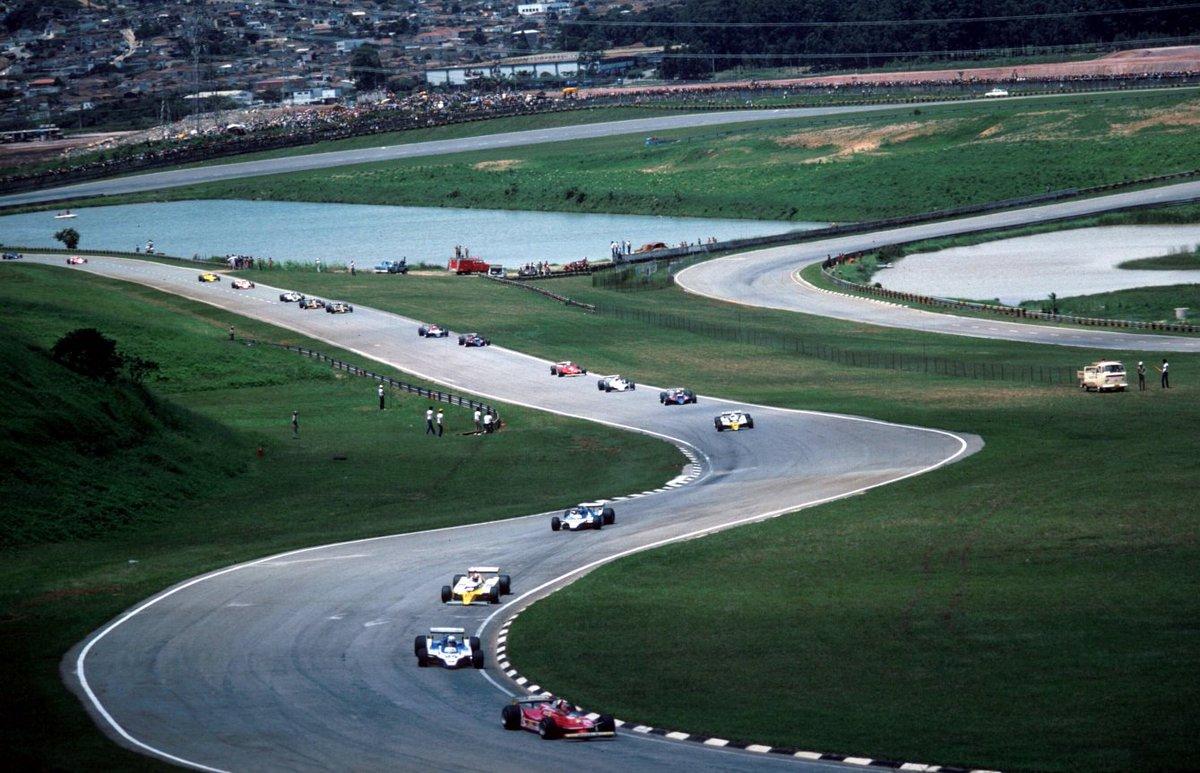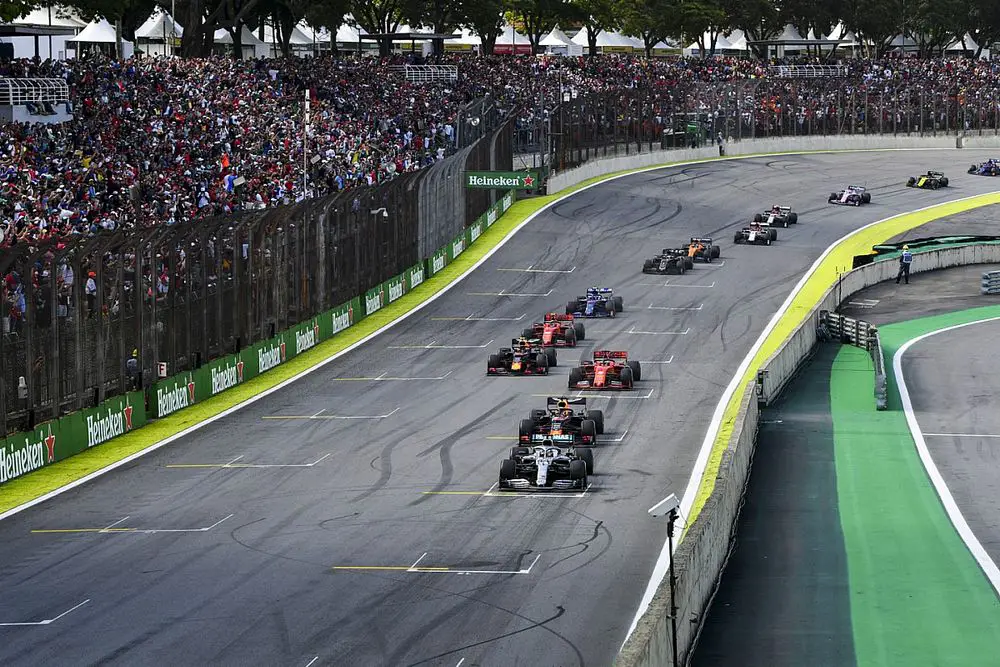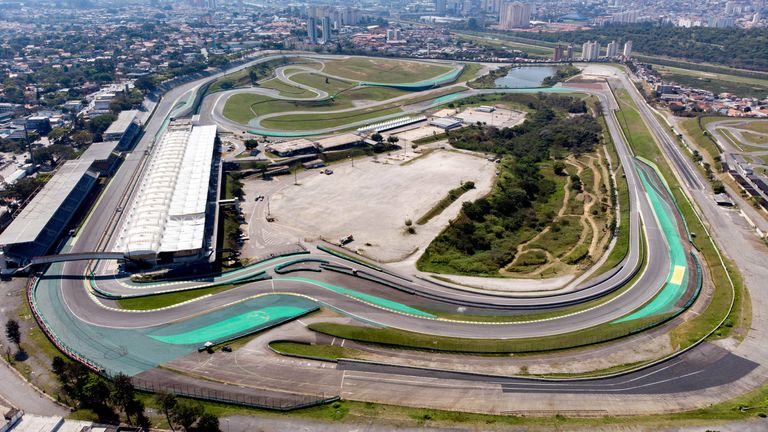The Brazilian Grand Prix is scheduled to take place from 3rd to 5th November at Interlagos – let us take a look at the DRS zones at this venue
The Autódromo José Carlos Pace, commonly known as Interlagos, is a 4.309 km racing track located in São Paulo, Brazil. It officially opened its doors on May 12, 1940, under the supervision of Adhemar de Barros, the federal overseer of São Paulo province at the time. The name “Interlagos” originates from its location nestled between two large man-made lakes, Guarapiranga and Billings, constructed in the early 20th century to supply the city with water and electricity. In 1985, the circuit was renamed in memory of Formula 1 driver José Carlos Pace, who tragically perished in a plane crash in 1977.

What sets Interlagos apart is its unique construction on undulating terrain, which results in a challenging track characterized by significant elevation changes. This design places higher stress on the engines of the cars and makes driving a more demanding endeavor. The counterclockwise direction of the circuit, featuring multiple challenging left turns, subjects the drivers to centrifugal forces that strain their necks to the right, a departure from the norm in comparison to most Formula 1 circuits where these forces typically push their necks to the left.
Interlagos Circuit – DRS Zones
Interlagos, officially known as the Autódromo José Carlos Pace, features two designated DRS zones that promote overtaking opportunities on its undulating and relatively short circuit. These zones are strategically placed to maximize the chances of overtaking, especially given the circuit’s challenging layout.
The main DRS zone is located along the start-finish straight, which is one of the longest straights on the track. The detection point for this DRS zone is typically positioned just before the final corner (Turn 15), and the activation point is often placed on the start-finish straight itself. This allows drivers to benefit from DRS as they exit the final turn, making it easier for them to slipstream and overtake their competitors into Turn 1.

The second DRS zone is known as “Reta Oposta” (Portuguese for “Back Straight”). The detection point for this zone is usually placed along the back straight before Turn 3, and the activation point is set just before the beginning of the straight. This DRS zone provides another critical opportunity for drivers to gain a speed advantage and attempt overtakes as they head into Turn 4, a sharp left-hander.
The DRS zones at Interlagos are strategically placed to encourage overtaking, especially in the context of the circuit’s shorter straights and elevation changes. Overtaking opportunities can be both thrilling and challenging due to the narrow and twisty nature of the track, as well as the potential for unpredictable weather conditions in São Paulo. Drivers need to carefully time their DRS activations to maximize their chances of passing competitors while minimizing their risk of being overtaken themselves.
Does the Interlagos F1 circuit encourage faster timings?
The Interlagos F1 circuit, officially known as the Autódromo José Carlos Pace, is renowned for its unique layout and challenging characteristics that encourage faster lap times. One of the key factors contributing to faster timings is the track’s anti-clockwise layout, which is relatively uncommon in the Formula 1 calendar. This direction places different demands on the drivers, as their neck muscles are subjected to different forces compared to clockwise circuits, providing a distinct challenge.
Moreover, the undulating nature of the Interlagos circuit with its varying elevations, notably the iconic downhill run into the Senna S corners, adds excitement and complexity. These elevation changes require precise car control and provide opportunities for drivers to make up time by mastering these challenging sections.

Another factor that contributes to faster times is the track’s relatively short length. With just over 4.3 kilometers, it’s one of the shortest circuits on the calendar. This means that the lap times are naturally quicker, and the shorter lap length can lead to closer competition as the margins between cars are reduced.
The weather at Interlagos can also be highly variable, with sudden rain showers being a common occurrence. This unpredictability adds an extra layer of excitement and can result in strategic decisions that further influence lap times. Overall, the Interlagos F1 circuit’s unique characteristics, including its anti-clockwise layout, undulating terrain, short lap length, and unpredictable weather, all contribute to encouraging faster lap times and making it a favorite among both drivers and fans.
More Formula One News
- Lewis Hamilton doesn’t support IOC’s decision on Black Lives Matter gear during Olympics
- Max Verstappen left surprised as he reaches 100 race milestone with Red Bull
- Damon Hill left in awe after Lewis Hamilton racks up 100 poles in F1 ahead of 2021 Spanish GP
Follow our dedicated Formula One page for instant Formula One news and updates

